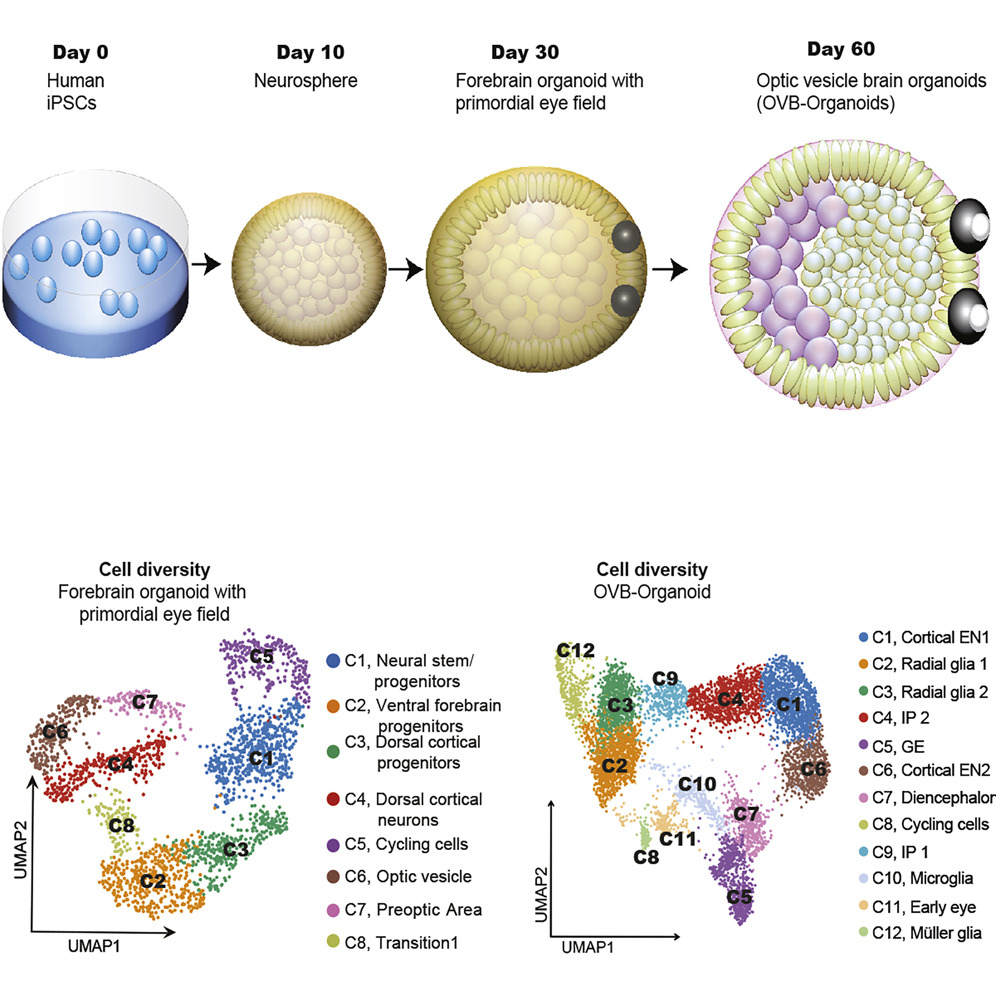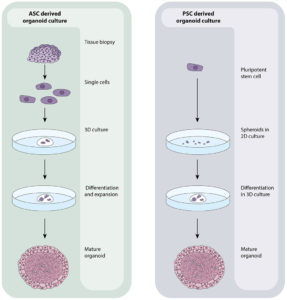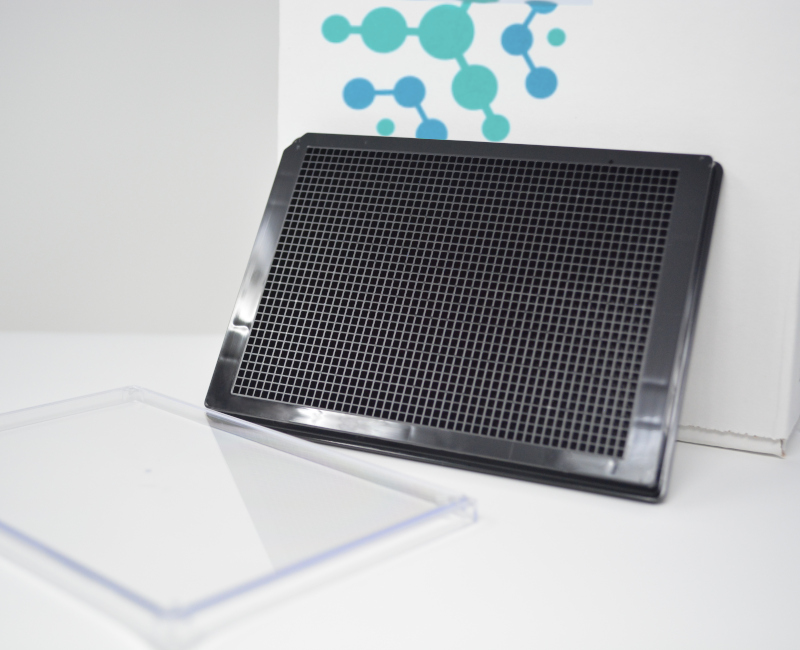
ORGANOIDS: CONSTRUCTS DERVIED FROM STEM CELLS
Organoids can be defined as three-dimensional multicellular in vitro tissue culture that has the capability to mimic its corresponding in vivo organ, so that they can be put in use to study characteristics of that organ in the tissue culture dish. Organoids can either be derived from pluripotent or adult stem cells from various organs. The developmental potential of the starting stem culture will influence how complex the organoids can be formed. Scientists have reported organoid models that mimic brain, retina, intestine, other components of the gastrointestinal tract, along with kidney and liver. (1)
STRATEGIES AND CHALLENGES FOR GROWING ORGANOIDS
Some protocols have been designed and modified by the researchers in order to generate pluripotent stem cell-derived organoids giving the cells minimal differential potential, thus permitting intrinsic self-organization and pre-assembly to process the shape of the tissue. One approach is to generate brain organoid from human pluripotent stem cells on Matrigel coated plates, which can generate some mesodermal and endodermal lineages of the brain. For adult stem cell derived organoids, growth conditions contain signals that are responsible for tissue repair after damage or steady state tissue maintenance. Although, they are promising model to generate 3d cultures, few challenges arise stating the fact that these cultures are intricate than the in vitro models. In addition, Organoids typically lack immune and vasculature cells, meaning that they are limited in how big they can grow without cell death. (1)
INCREASING COMPLEXITY AND CONTROL
Several approaches are being taken to generate more advanced models of organoids, generating constructs of greater complexity by fusing organoids that has initially grown or patterned separately. (1) This technology holds tremendous potential for regenerative medicine, as they represent the potential for cell therapy through the replacement of the damaged or affected parts of the tissue with organoid propagated tissue or stem cell populations. (2,3) Organoids also holds promise in studying the genetic and molecular features of the neurological diseases. To add to this, they also provide a platform for testing therapeutics. (4)
References:
1. Natalie de Souza , 2018 , organoids – a brief overview of stem cell-derived organoids: how they are made and what the challenges are. Nature methods
2. Yui S et al. (2012) Functional engraftment of colon epithelium expanded in vitro from a single adult Lgr5+ stem cell. Nat Med 18.
3. Fordham RP et al. (2013) Transplantation of expanded fetal intestinal progenitors contributes to colon regeneration after injury. Cell Stem Cell 13
4. Madeline G. Andrews and Arnold R. Kriegstein ,



